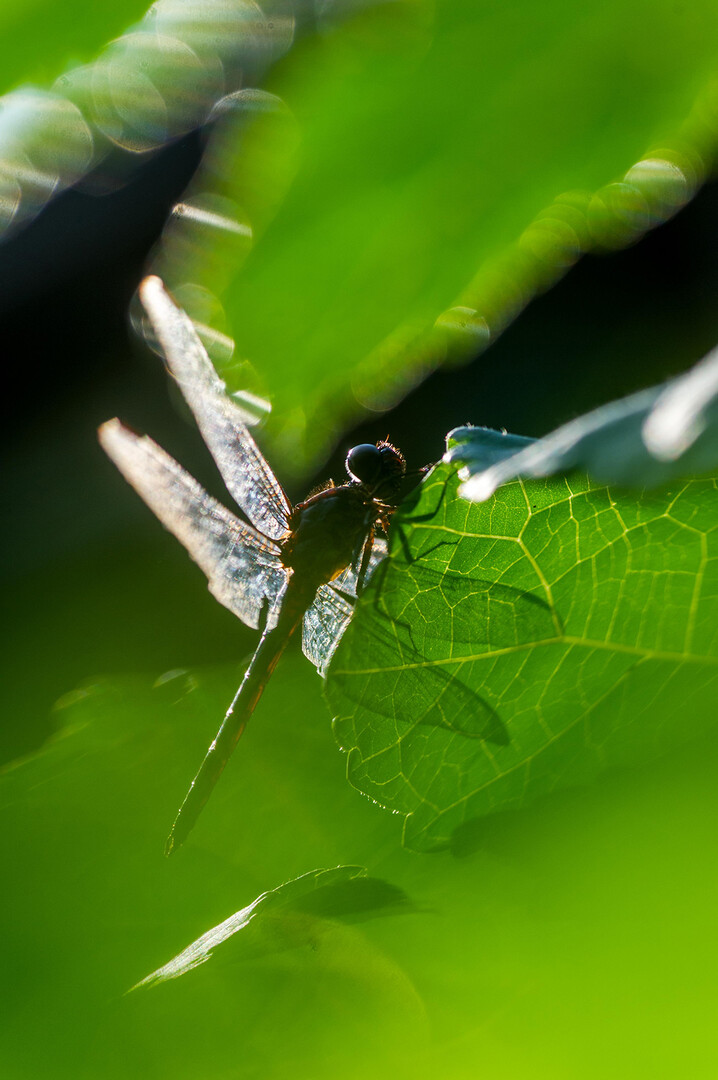If you have a mosquito problem in your yard, dragonflies may be the solution! They don't require much to thrive in your garden, and they'll eat hundreds of mosquitos a day.
Nothing ruins a summer evening outdoors quite like getting bitten by mosquitoes. While bug sprays and essential oils may work to keep them away from you, they’ll just move to another part of the yard. But you can play into the circle of life to control your mosquito population by following three steps to attract dragonflies to your yard.
Damselflies belong to the same family (Odonata) of insects as dragonflies and look similar, but they are smaller in size and fly slower than dragonflies do. Damselflies have hinges that allow them to fold their wings together when resting, while dragonflies do not—their wings are always outstretched like a biplane.
Dragonflies and damselflies are carnivorous and eat a lot of small insects. In addition to eating more than 100 mosquitoes per day, some adult dragonflies also eat midges, gnats, and other small insects. If you give them the right living conditions, dragonflies and damselflies will make your backyard their home and the mosquito population their dinner.

1. Add a Water Feature to Your Yard
Dragonflies and damselflies are aquatic insects that spend most of their lives in or around the water. They lay their eggs in the water and perch on surrounding vegetation. Some species prefer standing water while others prefer flowing water—do some research to see what types of aquatic insects are common in your area to determine what type of water feature to invest in. If possible, add some sort of bubbler or fountain to deter extra mosquitoes from visiting. If you are creating a water feature, make sure the water is at least two feet deep if you want dragonflies and damselflies to call it their home. Mosquito larvae survive best in shallow water, so having a deeper pond will also help to limit mosquitoes in your yard.
2. Plant Vegetation Near a Water Source
For their best chances of survival, damselflies and dragonflies need a few different types of vegetation in or near water. Submerged vegetation gives protection to eggs and nymphs. Emergent vegetation, or plants that are partially submerged and partially above water, give nymphs that are turning into adults a path to get out from underwater. Floating plants give adults perches for resting and laying eggs. Marginal vegetation (plants around the water’s edge) and nearby trees and shrubs give adults a place to perch, roost, and seek shelter.
3. Include Pollinator Plants in Your Landscape
A water source pretty much ensures that dragonflies get a steady source of mosquitoes and gnats to eat, but there are other types of insects they like to eat, too. They can also eat moths, butterflies, and bees when they are large enough. In addition to aquatic plants, you can incorporate pollinator plants into the landscape to attract more small insects for dragonflies and damselflies to eat. Some good pollinator plants for ponds include water lilies, buttercups, and irises.
Damselflies and dragonflies are insects that you should invite to your garden. If you have an existing pond or bog or want to build your own, make sure to include these things to give dragonflies and damselflies what they need. By attracting them to your yard, you reap the benefits of their mosquito-based diet, and they have a safe environment to thrive.